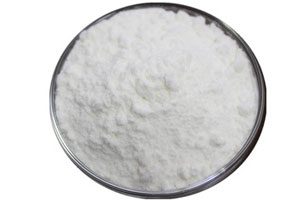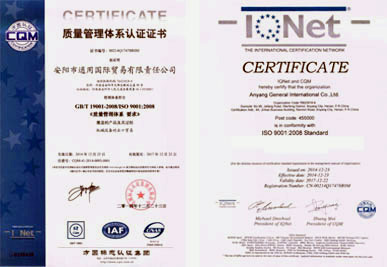High quality and good price L-Glutamine (CAS 56-85-9) for sale
L-Glutamine is involved in the biosynthesis of glucosamine from mucin components in mucous membrane of digestive tract, thereby promoting the repair of mucosal epithelial tissue and helping to eliminate ulcer lesions. At the same time, it can promote brain metabolism through blood brain barrier and improve brain function. Like glutamate, l-glutamine is an important nutrient for brain metabolism.
Characteristics of L-Glutamine (CAS 56-85-9)

- Product Name: L-Glutamine
- Synonyms: L(+)-Glutamine; L(+)-Glutamic acid-5-amide; L-Glutamine, FCC Grade L-2-Aminoglutaramic acid, FCC Grade; levoglutamide; H-Gln-OH; L-Glutamic acid 5-amide; D-glutamine; alpha-glutamine; 2,5-diamino-5-oxo-pentanoic acid
- CAS No.: 56-85-9
- EINECS No.: 200-292-1
- Molecular Formula: C5H10N2O3
- Molecular Weight: 146.15
- Melting Point: 185-186°C
Property and Stability of L-Glutamine (CAS 56-85-9)
- L-Glutamine is involved in the biosynthesis of glucosamine from mucin components in mucous membrane of digestive tract, thereby promoting the repair of mucosal epithelial tissue and helping to eliminate ulcer lesions. At the same time, it can promote brain metabolism through blood brain barrier and improve brain function. Like glutamate, l-glutamine is an important nutrient for brain metabolism.
- L-Glutamine exists in tobacco leaves and smoke.
- It is valuable in the field of immunization. In organisms, toxic ammonia is converted to non-toxic l-glutamine, then it is excreted through urine. In general, it does not participate in the composition of protein.
Physicochemical Properties of L-Glutamine (CAS 56-85-9)
The appearance of l-glutamine is white crystalline or crystalline powder, soluble in water, almost insoluble in methanol, ethanol, ethyl ether, benzene, acetone, ethyl acetate, chloroform and ethyl alcohol. Odorless, nontoxic, and slightly sweet. The melting point is 185-186 ℃. L-glutamine is stable in neutral solution and easy to decompose in alcohol, alkali or hot water.
Uses of L-Glutamine (CAS 56-85-9)
- L-glutamine (CAS 56-85-9) can be used for biochemical research. In medicine, l-glutamine is used for diseases such as peptic ulcer, mental disorder, alcoholism, epilepsy and brain dysfunction, etc. It is used to improve children with mental disabilities.
- L-glutamine (CAS 56-85-9) is used for nutrition supplement and flavor enhancer. In medicine, it is used to treat peptic ulcer, alcoholism and improve brain function.
- L-glutamine is converted into osamine in vivo. As a precursor of synthetic mucin, it can promote ulcer healing. It is mainly used for peptic ulcer drugs.
- Biochemical research, bacterial culture media.
Synthetic Method of L-Glutamine (CAS 56-85-9)
L-glutamine (CAS 56-85-9) exists widely in nature, for example, in the seedling of pumpkin and sunflower in a free state. Its N-ethyl compound (theanine) is contained in tea. Although l-glutamine can be extracted from natural products, fermentation and synthesis are used in mass production.
- Synthetic method.
- Fermentation method.


